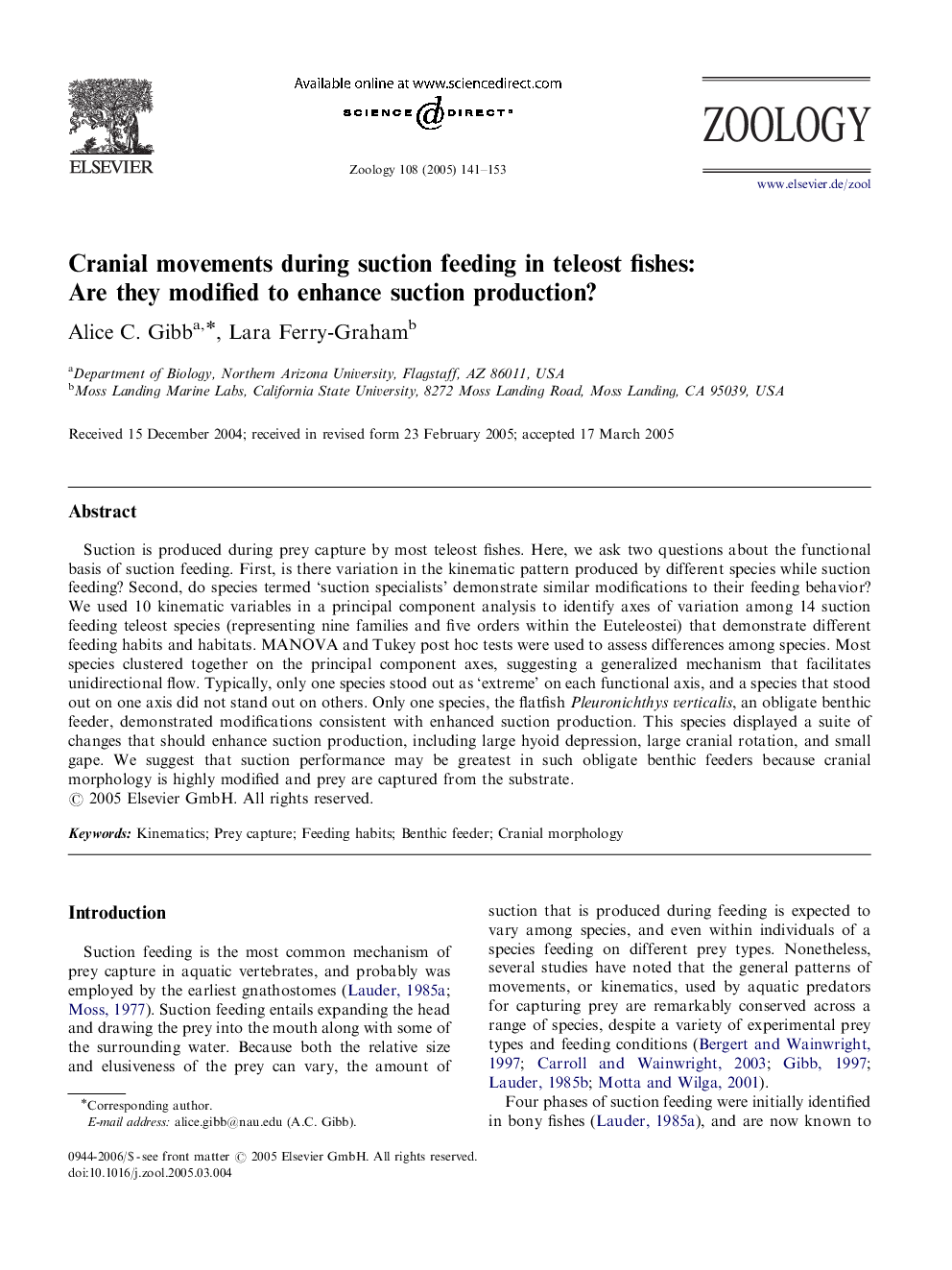| Article ID | Journal | Published Year | Pages | File Type |
|---|---|---|---|---|
| 9110108 | Zoology | 2005 | 13 Pages |
Abstract
Suction is produced during prey capture by most teleost fishes. Here, we ask two questions about the functional basis of suction feeding. First, is there variation in the kinematic pattern produced by different species while suction feeding? Second, do species termed 'suction specialists' demonstrate similar modifications to their feeding behavior? We used 10 kinematic variables in a principal component analysis to identify axes of variation among 14 suction feeding teleost species (representing nine families and five orders within the Euteleostei) that demonstrate different feeding habits and habitats. MANOVA and Tukey post hoc tests were used to assess differences among species. Most species clustered together on the principal component axes, suggesting a generalized mechanism that facilitates unidirectional flow. Typically, only one species stood out as 'extreme' on each functional axis, and a species that stood out on one axis did not stand out on others. Only one species, the flatfish Pleuronichthys verticalis, an obligate benthic feeder, demonstrated modifications consistent with enhanced suction production. This species displayed a suite of changes that should enhance suction production, including large hyoid depression, large cranial rotation, and small gape. We suggest that suction performance may be greatest in such obligate benthic feeders because cranial morphology is highly modified and prey are captured from the substrate.
Related Topics
Life Sciences
Agricultural and Biological Sciences
Animal Science and Zoology
Authors
Alice C. Gibb, Lara Ferry-Graham,
